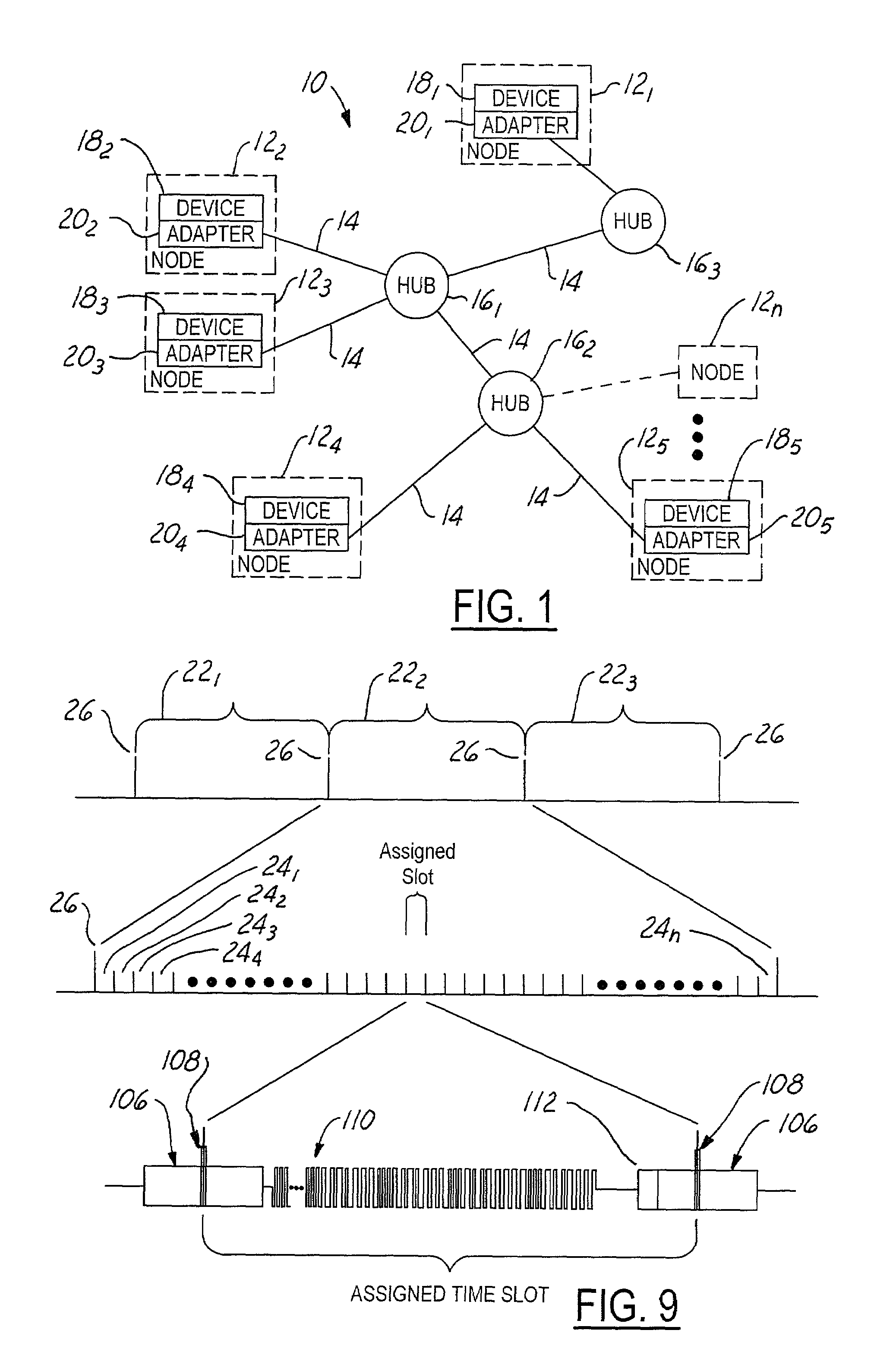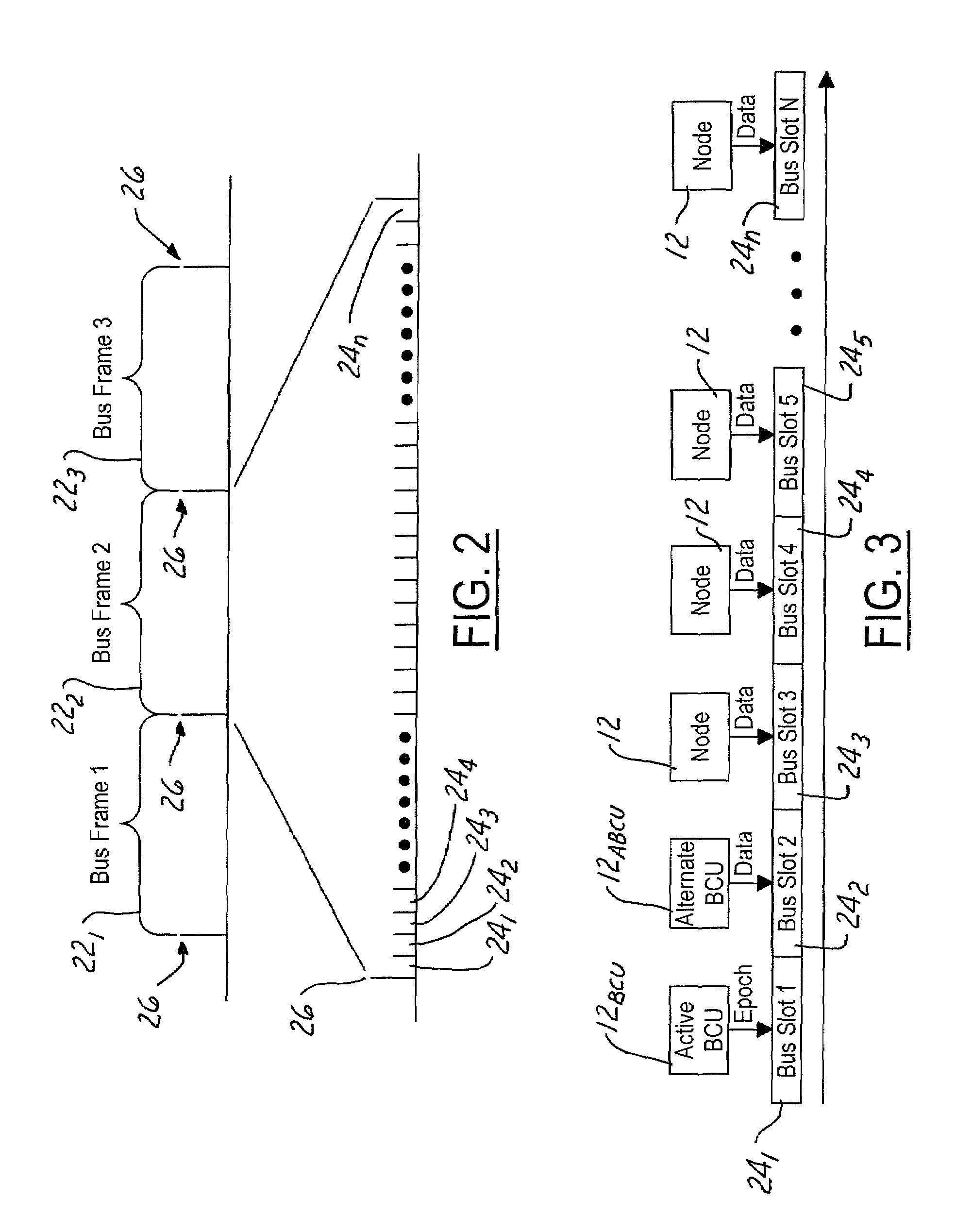Time slot protocol
a time slot and protocol technology, applied in the field of computing networks, can solve the problems of inconsistent system cost, impracticality of point-to-point connection, and ethernet, but suffer from being unpredictable regarding the timely delivery of periodic data, so as to increase the utilization of the bus and increase the bandwidth for payload.
- Summary
- Abstract
- Description
- Claims
- Application Information
AI Technical Summary
Benefits of technology
Problems solved by technology
Method used
Image
Examples
Embodiment Construction
[0029]Referring now to the drawings wherein like reference numerals are used to identify identical components in the various views, FIG. 1 is a block diagram view of a network 10 according to the invention. The present invention may be implemented over a wide variety of networks and shared media or bus types, and will be described in connection with a preferred embodiment implemented over an Ethernet network. It should be understood, however, that the present invention is not limited to an Ethernet network and further is not limited to a Carrier Sense Multiple Access (CSMA) with Collision Detection (CD) access protocol. The present invention may be usefully deployed for a wide variety of applications, and is particularly suited for real-time embedded control applications where strict deterministic access to the network, and low jitter, are required. In one embodiment, network 10 may be an avionics communications network.
[0030]As shown in FIG. 1, network 10 includes a plurality of no...
PUM
 Login to View More
Login to View More Abstract
Description
Claims
Application Information
 Login to View More
Login to View More - R&D
- Intellectual Property
- Life Sciences
- Materials
- Tech Scout
- Unparalleled Data Quality
- Higher Quality Content
- 60% Fewer Hallucinations
Browse by: Latest US Patents, China's latest patents, Technical Efficacy Thesaurus, Application Domain, Technology Topic, Popular Technical Reports.
© 2025 PatSnap. All rights reserved.Legal|Privacy policy|Modern Slavery Act Transparency Statement|Sitemap|About US| Contact US: help@patsnap.com



